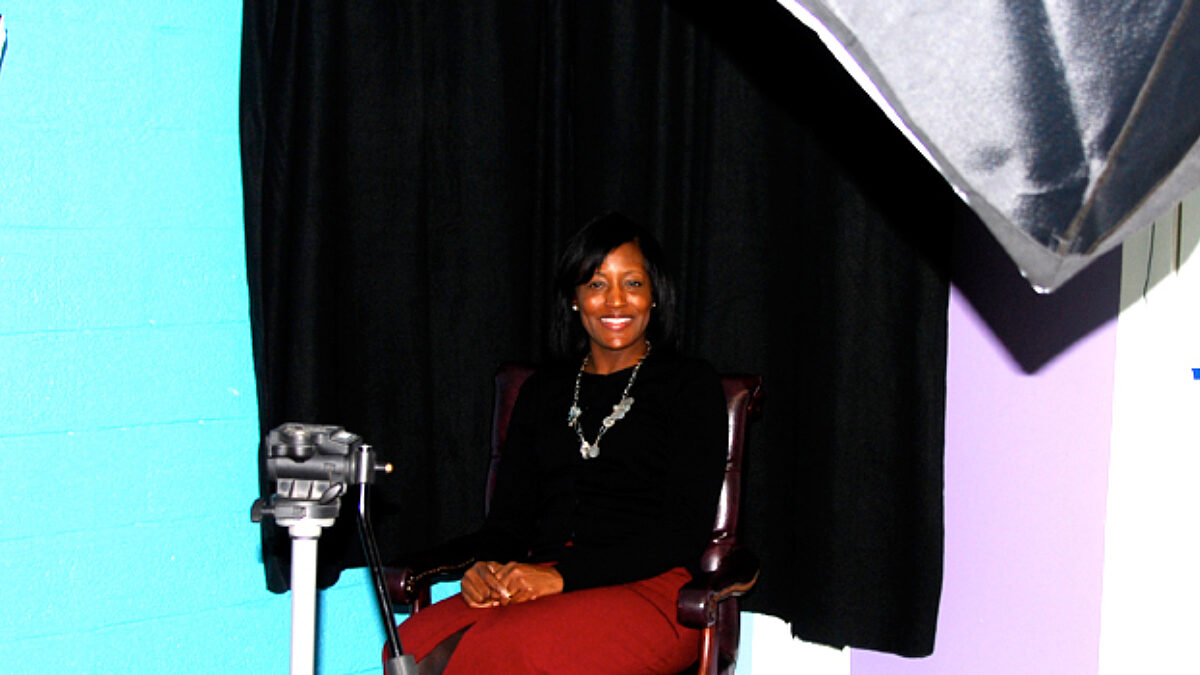
Video village helps Bethlehem Center level the tech playing field
By Jessica Brodie
SPARTANBURG—A new citywide public art project is helping one United Methodist ministry level the technology playing field.
The Bethlehem Center, Spartanburg, is helping the Spartanburg Art Museum and local production company White Elephant Enterprises offer a video village to the people in its neighborhood. The video village is part of a novel project made possible through a $1 million Bloomberg Philanthropies public art grant for “Seeing Spartanburg in a New Light,” an effort that focuses on various communities across the city.
The Bethlehem Center’s Highland neighborhood is one of several communities around Spartanburg in the spotlight; other communities are doing river poetry (LED-lit lines of poetry along the 116-acre Cottonwood Trail), floating islands of light on Duncan Park Lake, multicolored mobile curtains that float above the lawn at Denny’s Plaza, and more.
For the video village (HighlandVideoVillage.com), the museum and White Elephant established a media lab in a room at the Bethlehem Center and interviewed residents about their neighborhood. The videos are projected every evening onto nearby vacant buildings for the community to see and celebrate.
Not only does the center get to keep the media lab, but when the project ends, it will get to keep equipment from the video village that will be converted into computers.
“Those 52 units will allow us to have a computer in each classroom for training, job skills, workshops and partnerships with community colleges,” said Patrena Mims, executive director of the Bethlehem Center.
Mims, a mother herself, knows firsthand how schools are cultivating technology in the classroom to help students be better prepared for modern career needs. As director, she is doing her part to make sure the Bethlehem Center is able to meet those needs.
The local school district has a new program, 7Ignites, through which the district issues students iPads or Macbooks to enable better learning, but many Bethlehem Center students are far behind in the learning curve on how to use the technology.
“There are already barriers in place with kids reading below grade level, and we have an educational divide created with technology, too, that is widened because of the lack of access—or the lack of Wi-Fi,” Mims said. “We’re going into a time when everything is technology.”
The challenge is leveling the playing field, she said.
The media lab and new computers they are getting as part of the video village is one step toward achieving that, as is a grant the Bethlehem Center recently received to get tablets of its own so area children can hone their skills.
All about Matthew 25:40
In existence since the 1930s to meet the needs of the community, the Bethlehem Center is a cornerstone of the Highland community. The neighborhood is known for its share of struggles, from unemployment and drugs to high crime rates. The Bethlehem Center tries to serve its neighbors in the best way possible and try to stay fluid and responsive to the ever-changing needs. When it started, the center largely existed to provide care for children while their parents worked, hot meals for families and cooking and sewing classes for a population who largely worked as cooks and maids for well-to-do families. Over the years, as drugs became a problem, it became a safe haven for people trying to steer clear of bad influences or stay clean.
Today, it tries its best to mission to people and families holistically, whether through its food pantry, boxing program, job training, thrift store, afterschool program, senior wellness programs, community garden or its latest major focus—technology.
“It’s about moving families closer to self sufficiency, about high standards and discipline, about showing people there are possibilities, there is hope,” Mims said.
“It’s everything to the community,” said Thomas Hargrove, Bethlehem Center volunteer and vice president of the Highland Neighborhood Association, which partners with the center to serve residents and enable growth.
The Rev. Jane Jenkins, Bethlehem Center board member, said the center focuses on teaching people to fish, not just giving people the fish.
“The outreach is unbelievable,” Jenkins said.
And teaching youth and adults to use—and master—technology is one huge way the center is doing that. Mims envisions increased workshops for technology training and job skills, plus developing partnerships with community colleges where people can earn certificates. They’re also exploring remote technology so the Bethlehem Center’s services can help people in other parts of the community, not just those right outside the door. They also are able to help students with computer-oriented homework that requires skills they might not have yet—such as one teen who asked Mims to help her create a PowerPoint for a class; the student’s teacher assumed she knew how.
“Sometimes we lose focus on things, make basic assumptions that people have stuff, know stuff,” Mims said. “But being on the grassroots level means you can realize the basic things not everyone has.”
At the end of the day, Mims, her staff and volunteers, the community partners and the Bethlehem Center board do what they can to help their community, one skill and service at time.
“We’re putting Matthew 25:40, caring for the least of these, into action and serving as a beacon of light and hope for the people of this community in all we do,” Mims said.